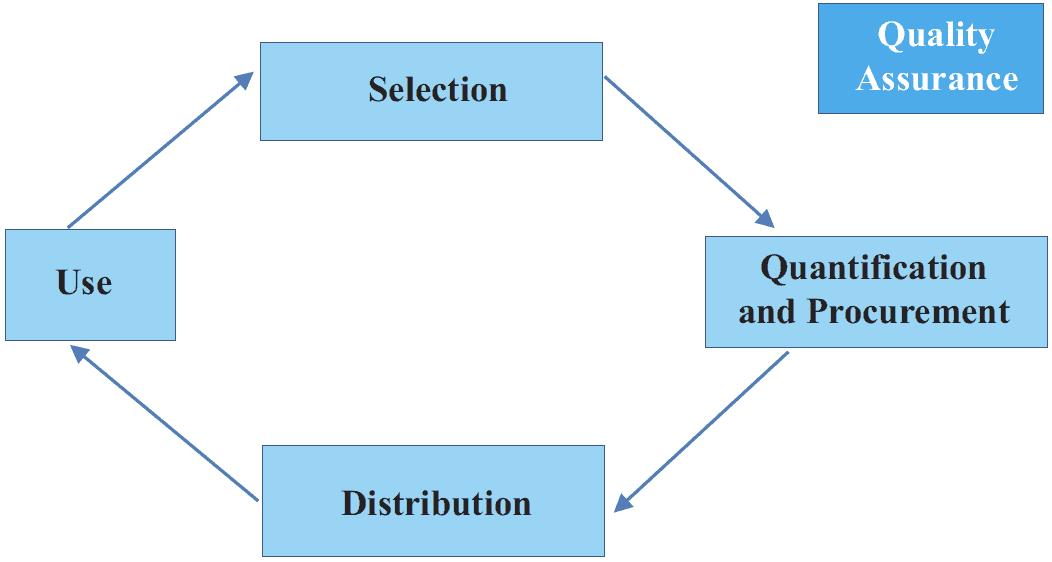Selection of the drugs for procurement depends on regimens as well as categorization of patients. NTP follows global recommendation while selecting the optimum regimens or categorization of TB patients.
Quantification is based on the quantity of drugs required for treatment of different categories of patients (annex 4). Quantification of anti-TB drugs is usually carried out annually or as per requirement at the central level by the NTP managers with the technical assistance from partners. NTP uses GDF (Global Drug Facility) recommended tool, QuanTB, for quantification of TB drugs. This estimation of amounts of drugs required is based on the number of TB cases (category-wise) enrolled recently as well as estimated patients for the procurement period, treatment regimens to follow, amount of buffer stocks, stock-in-hand and stock on order (pipeline) at the time of the drug order.
Quantification of anti-TB drugs at the upazila, CDC or city level is usually done quarterly through drug requisition form or TB 08. This form has defined formula based on the number of patients (in different categories and regimens) diagnosed during the previous quarter, current stock and buffer.
The local health authorities, in collaboration with NGOs, will calculate the quantity of drugs required and fill in the requisition form for drugs (TB 08) at the end of every quarter. The form will be signed by the Upazila Health and Family Planning Officer (UH&FPO) or unit chief, countersigned by the Civil Surgeon (or supervisor for the unit) and forwarded to the central level, preferably within the first week of the following month. The concerned NGOs will collect the drugs from central level and deliver them to the respective indenting authority. Alternatively, the NTP may arrange for central supply of the drugs to the indenting authority. A tool for electronic indenting is in use in the program. The electronic indenting is connected to the Warehouse Inventory Management System (WIMS) used in Shyamoli Central TB Warehouse (CWH) for inventory as well as supply management. The electronic system follows the same calculation as the paper based TB08.
The NGOs will collect the required drugs from the designated UHC through an indent to the UH&FPO and will report consumption and balance of drugs and other delivered logistics/laboratory consumables to the respective UH&FPO (or unit chief).
The information about drug consumption and stock at the upazila level will be communicated quarterly to the central level along with the case finding and treatment outcome reports. It is the responsibility of the UH&FPO (or unit chief) to ensure that this information is sent on time to avoid delays of supplies and possible stock outs. The buffer stock of drugs and laboratory consumables for the peripheral stores will be for one quarter.

